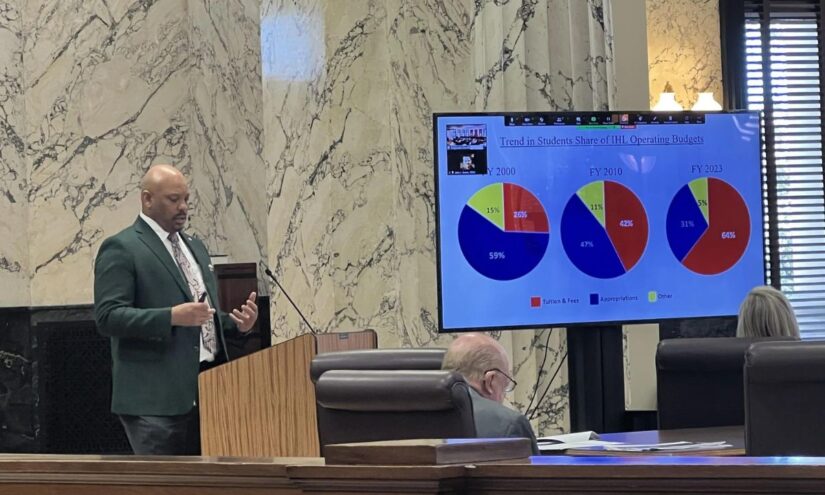During this summer, a team of students from MIT embarked on a journey to the sou …
Mississippi Lawmakers Seek Assurance on State’s Readiness for ‘Enrollment Cliff’
Carlos Changemaker

The number of high school graduates in Mississippi is set to decline starting next year, according to a report by Mississippi Today. This trend, known as the “enrollment cliff,” will have a significant impact on the state’s colleges and universities, especially regional institutions such as Delta State University, Mississippi University for Women, and Mississippi Valley State University, which are already struggling with enrollment. Noel Wilkin, the University of Mississippi’s provost, presented data showing that Mississippi is expected to have the second-worst decline in high school graduation rates in the Southern U.S. by 2027.
During a joint hearing of the House and Senate Colleges and Universities committees, the focus was on what actions the Institutions of Higher Learning Board of Trustees, the governing body for Mississippi’s public universities, is taking to address this issue. Senator Scott DeLano asked Al Rankins, the IHL commissioner, when a report detailing the recommendations and strategies for the future can be expected. Rankins responded by stating that IHL has been discussing the enrollment cliff for several years and has a working group specifically focused on the unique needs of regional colleges.
Kell Smith, the director of the Mississippi Community College Board, also attended the hearing. He stated that the MCCB does not have a strategic plan for dealing with the enrollment cliff, but some of the individual community colleges might have their own plans in place.
The enrollment cliff is a complex issue with no simple solutions, according to John Green, a professor at Mississippi State University who spoke at the hearing. It is primarily driven by declining birth rates, which will be further exacerbated by out-migration from Mississippi and deaths due to the COVID-19 pandemic. However, the changing economics of higher education are also contributing to the problem. Mississippi’s four-year public universities have become more dependent on tuition than state appropriations, largely due to funding choices made by the Legislature in previous years.
Al Rankins presented a chart showing that in 2000, state appropriations supported nearly 60% of the universities’ operating budgets, while tuition accounted for 26%. However, by fiscal year 2023, this ratio had reversed, with tuition supporting 64% of operating budgets. This shift raises the question of whether Mississippi’s colleges and universities can still be considered a public service if they are increasingly reliant on student tuition rather than taxpayer dollars.
Representative Lance Varner, a member of the House committee, expressed his concerns about the situation. He stated that while he believes higher education is a public good, he understands that universities would prefer to be less dependent on state appropriations. Currently, tuition and fees make up 78% of the University of Mississippi’s total operating budget, the highest proportion among public universities. One way the university is addressing the enrollment cliff is by attracting more out-of-state students, who pay higher tuition fees. The revenue generated from these non-resident students helps offset the costs for in-state students.
The University of Mississippi received $62 million in tuition from in-state students in fiscal year 2023, compared to $188 million from non-resident students. This revenue is essential for maintaining affordable education for in-state students, as the total costs of educating them far exceed the revenue generated from in-state tuition and state appropriations.
Noel Wilkin also highlighted the “intangible” aspect of higher education, which can influence students’ decisions on whether and where to attend college. He mentioned the increasing diversity of high school graduates and the questions being raised about the value of a higher education degree in today’s society. By 2036, white students are projected to make up 43% of high school graduates, compared to the current 51%. On the other hand, the percentage of black students is expected to increase from 25% to 28%.
Kell Smith, the MCCB director, emphasized the need for community colleges to focus more on students without a high school diploma, regardless of the enrollment cliff. He believes that targeting these students is crucial for the future success of community colleges.


